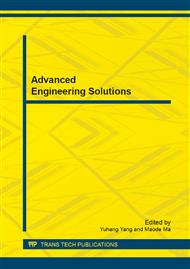p.165
p.169
p.173
p.177
p.181
p.185
p.190
p.194
p.199
Study on Consistency Analysis in Text Categorization
Abstract:
Accurate classification of text is a basic premise of extracting various types of information on the Web efficiently and utilizing the network resources properly. In this paper, a brand new text classification method was proposed. Consistency analysis method is a type of iterative algorithm, which mainly trains different classifiers (weak classifier) by aiming at the same training set, and then these classifiers will be gathered for testing the consistency degrees of various classification methods for the same text, thus to manifest the knowledge of each type of classifier. It main determines the weight of each sample according to the fact is the classification of each sample is accurate in each training set, as well as the accuracy of the last overall classification, and then sends the new data set whose weight has been modified to the subordinate classifier for training. In the end, the classifier gained in the training will be integrated as the final decision classifier. The classifier with consistency analysis can eliminate some unnecessary training data characteristics and place the key words on key training data. According to the experimental result, the average accuracy of this method is 91.0%, while the average recall rate is 88.1%.
Info:
Periodical:
Pages:
181-184
Citation:
Online since:
July 2014
Authors:
Price:
Сopyright:
© 2014 Trans Tech Publications Ltd. All Rights Reserved
Share:
Citation:


